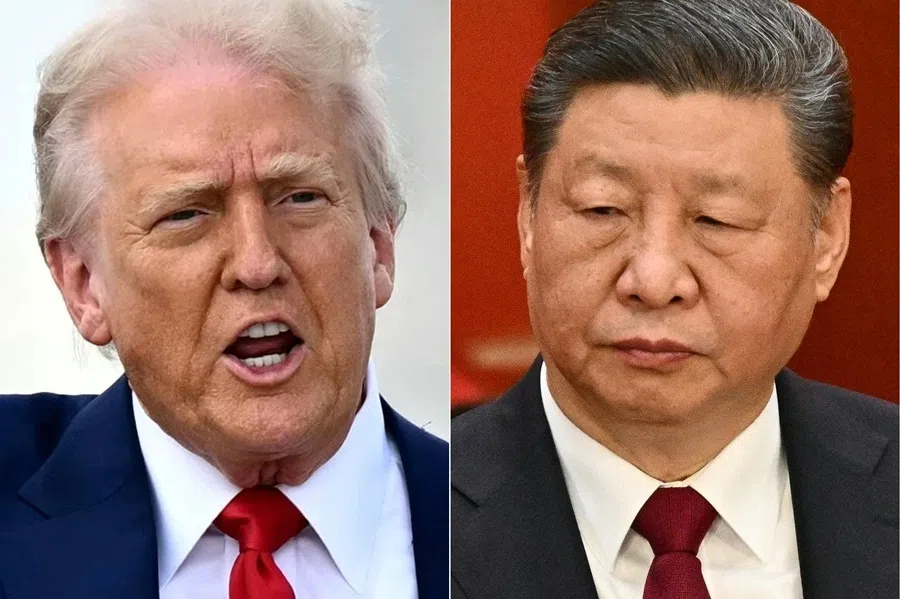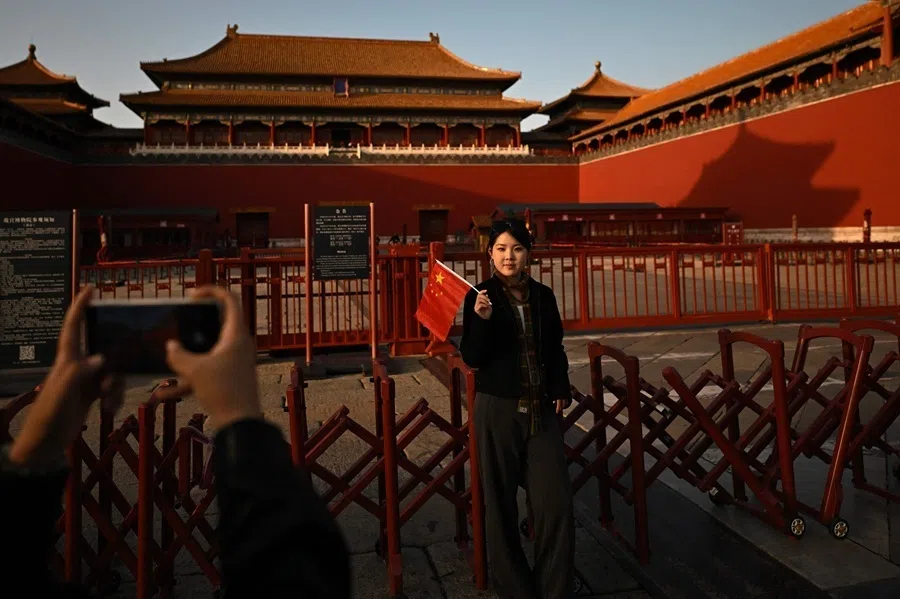ASEAN’s charm offensive wins the room, but can it win the future?
Amid global fractures, the 47th ASEAN Summit in Kuala Lumpur stood out for its warmth and wit — from Trump’s dance to Anwar’s deft diplomacy. But beneath the charm offensive lies a deeper test: can civility and consensus keep ASEAN united in a divided world? Academic Ma Haiyun explores the topic.

Held from 26 to 28 October in Kuala Lumpur, the 47th ASEAN Summit stood out as an unusually cordial and engaging display of regional diplomacy — complete with Trump’s celebratory dance, Anwar Ibrahim’s humorous joke, and Brazilian President Lula’s birthday celebration. Amid a tense global climate, this rare moment of levity captured the essence of the “ASEAN fashion” of diplomacy: courteous, inclusive, and constructive.
Under Malaysia’s chairmanship and Anwar’s charismatic leadership, the summit blended warmth with strategic purpose, reminding the world that civility and consensus can still serve as the foundation of global politics in an age of polarisation. What some once dismissed as ritualistic — the region’s soft-spoken, process-oriented style of diplomacy — has again proven vital for sustaining trust and stability in a region ringed by powerful competitors.
Centrality through inclusivity and neutrality
Under the theme “Inclusivity and Sustainability,” the summit reaffirmed ASEAN’s dynamic centrality. The inclusion of Timor-Leste as ASEAN’s eleventh member symbolised openness to historical, linguistic, cultural, and political diversity. The admission of Timor-Leste into ASEAN helps reduce the risk of the small nation becoming a flashpoint in great power rivalry. In effect, ASEAN de-geopoliticised a strategically sensitive corner of the Pacific by embedding it in a framework of collective dialogue and cooperation.
By widening participation without taking sides, ASEAN reaffirmed its commitment to multilateral dialogue as a means of preserving both its neutrality and its relevance in a fragmented world.
The summit’s inclusivity extended well beyond ASEAN’s borders. Leaders and senior officials from the US, Japan, China, South Korea, Canada, Brazil, South Africa, and India — together with representatives from the United Nations, European Union, and IMF — convened in Kuala Lumpur, transforming the city into a genuine crossroads of global diplomacy and commerce.
This remarkable breadth reflected ASEAN’s determination to resist binary alignments — whether between East and West, Washington and Beijing, or the Global North and South. By widening participation without taking sides, ASEAN reaffirmed its commitment to multilateral dialogue as a means of preserving both its neutrality and its relevance in a fragmented world.

Importantly, ASEAN’s centrality does not imply dominance. Even the European Union, with its dense institutional framework, struggles to manage challenges such as the war in neighbouring Ukraine. The ASEAN Way — open, consensus-driven, and pragmatic — seeks participation rather than exclusion. This inclusive approach has yielded quiet but tangible successes, as seen in ASEAN’s facilitation of dialogue over the Cambodia–Thailand border dispute.
Centrality, in ASEAN’s context, is a flexible strategy for preserving autonomy while welcoming constructive contributions from external powers. Through balanced engagement with China, the US and other partners, ASEAN continues to strengthen its independence and assert itself as a central force in regional affairs.
Collectively, these initiatives placed ASEAN — and Malaysia as chair — at the heart of an interconnected global economy grounded in inclusivity, innovation, and shared growth.
Expanding economic role
The Kuala Lumpur summit underscored ASEAN’s expanding role as a hub of regional economic cooperation. Under Malaysia’s chairmanship, the bloc deepened engagement with major economies through initiatives promoting market openness, sustainability, and partnership, while working to reduce tariffs and other barriers to trade.
The US renewed its economic ties with ASEAN through the Joint Vision Statement to Promote a Stronger, Safer, and More Prosperous ASEAN and America, reaffirming its commitment to diversified supply chains and regional investment while advancing discussions on tariff frameworks for ASEAN exports — a step toward more balanced trade.
In partnership with the European Union, ASEAN launched the Centre of Excellence for MSMEs in Green Transition (MEGA) to support small and medium enterprises in adopting low-carbon and innovative practices. This initiative links environmental sustainability with economic development, aligning ASEAN’s internal goals with global green agendas.
At the same time, enhanced cooperation with China, Japan, and South Korea through the RCEP+3 and East Asia Summit frameworks strengthened regional value chains and financial networks and upgraded the free trade agreement. Collectively, these initiatives placed ASEAN — and Malaysia as chair — at the heart of an interconnected global economy grounded in inclusivity, innovation, and shared growth.
Security and sustainability
Economic growth and regional integration depend on peace. Malaysia and its ASEAN partners have sought to address long-running domestic conflicts, including separatist movements in southern Thailand and the southern Philippines. In managing interstate disputes such as the Thailand–Cambodia border issue, ASEAN’s limited security mechanisms have made cooperation with external powers — especially the US and China — both necessary and strategic.
Inviting President Trump to the signing ceremony of the peace agreement was a diplomatic masterstroke: it allowed the US to project itself as a constructive peace broker while drawing a major power into ASEAN’s stability agenda.

Prime Minister Anwar Ibrahim adeptly guided negotiations with the support of both Washington and Beijing, recalibrating and advancing ASEAN’s approach to security diplomacy. Inviting President Trump to the signing ceremony of the peace agreement was a diplomatic masterstroke: it allowed the US to project itself as a constructive peace broker while drawing a major power into ASEAN’s stability agenda. The move transformed US–China competition into constructive cooperation within ASEAN affairs, reaffirming the bloc’s role as a mediator rather than a battleground.
ASEAN: a glue for a fragmented world
Premodern Southeast Asia — often described as the Southeast Asian Mediterranean — was long celebrated for its openness and connectivity, serving as a crossroads linking the Indian Ocean rim, the Chinese world, and the wider Nusantara archipelago.
Unlike today’s Mediterranean region — where surrounding organisations such as the European Union, African Union, and Arab League divide the basin into distinct blocs — the Southeast Asian Mediterranean continues to expand its reach in all directions: north toward East Asia, west to South Asia–the Middle East–Africa, eastward to the Pacific and the Americas, and south to Oceania.
Rather than serving as an arena for great power rivalry, Southeast Asia is increasingly emerging as a venue for reconciliation and mutual accommodation — both within the region and in its external relations.
Rather than serving as an arena for great power rivalry, Southeast Asia is increasingly emerging as a venue for reconciliation and mutual accommodation — both within the region and in its external relations. It stands as a living argument that inclusive regionalism can moderate global power politics.
The ASEAN fashion of diplomacy is not about pomp but about purpose: creating space for cordiality and cooperation where division seems inevitable. The Kuala Lumpur summit demonstrated that ASEAN’s distinctive blend of friendliness, inclusiveness, and quiet activism can rehumanise diplomacy and restore civility to world politics.

In an age of polarised forums and weaponised rhetoric, ASEAN offers a rare alternative — diplomacy grounded in harmony rather than hostility. It reminds us that dialogue itself is a strategic asset and that, at times, the softest voice carries the greatest authority.
Challenges and uncertainties ahead
Beneath the optimism of Kuala Lumpur, ASEAN still faces deep structural and strategic challenges. Persistent political diversities (from democracy to dictatorship) and economic disparities (from high income Singapore to the most impoverished countries like the Philippines and Timor Leste) — both within and among its member states, as well as unbalanced and uncoordinated defence forces — continue to hinder common peace and shared prosperity.
The organisation’s long-term direction also remains unclear: will it evolve merely into a stronger economic bloc, or pursue deeper political and institutional integration, as the European Union has? ASEAN’s institutional weakness and the absence of common foreign, defence, or financial policies leave it exposed to both internal fragmentation and external pressures.
Unless ASEAN strengthens its institutions and clarifies its vision for integration, it may find its autonomy eroded in a world where centrality and neutrality is harder to sustain without the backing of major powers or security organisations.
Security, however, poses ASEAN’s greatest test. Unlike the African Union — which, with external support, has developed limited peacekeeping capabilities — and the European Union, which benefits from NATO’s protection, ASEAN has neither. The Arab League’s paralysis in responding to Israel’s attack on its member state, Qatar — and Qatar’s subsequent reliance on its security pact with the US — offers a cautionary lesson for the region.
Existing bilateral alliances — such as those between Washington and Manila — already strain ASEAN’s centrality and neutrality, as do renewed security ties with Japan and the emergence of new military groupings like AUKUS. The US involvement in the Cambodia–Thailand border conflict could further expand Washington’s security footprint in the region, testing ASEAN’s ability to maintain balance amid intensifying great power rivalry.
ASEAN’s increasingly broad outreach — from Africa to Latin America and from Asia to Oceania — speaks to its rising ambition, but also risks turning it into a diplomatic gala — high on symbolism but short on strategic coherence. Unless ASEAN strengthens its institutions and clarifies its vision for integration, it may find its autonomy eroded in a world where centrality and neutrality is harder to sustain without the backing of major powers or security organisations.





